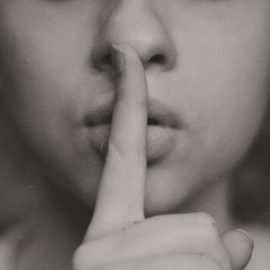
What’s the book Attention Span about? Do you feel overwhelmed by the pressure to be productive?
In her book Attention Span, Gloria Mark draws from decades of research on how the human brain spends its mental energy, the many ways we become distracted, and how our capacity to focus fluctuates. She also explores the different modes of attention and how we can reclaim our attention from the distractions of the modern world.
Read more in our brief Attention Span book overview.
Overview of Attention Span by Gloria Mark
We often feel pressured to be as productive as possible while being bombarded with far more distractions than we can handle. A lot of us believe we could use our time better if we learned to focus on our most important tasks to the exclusion of everything else. Many productivity experts believe we should all be working toward this supreme level of intense, uninterrupted concentration—but what if that’s the wrong approach entirely? What if laser focus isn’t just unrealistic, but detrimental to achieving the things we want from work and life?
In the book Attention Span, published in 2023, Gloria Mark presents an alternative solution to the problem of staying focused all the time—don’t. She suggests that attention isn’t limited to “focused or distracted,” but that there are multiple types of attention, all of which have value —even time spent doing mindless, mechanical work, playing games on your phone, or just letting your mind wander. Mark advocates finding the appropriate balance between deep concentration and mental relaxation to help your mind operate at its best while staving off cognitive burnout.
Mark has a Ph.D. in Psychology from Columbia University and is a professor at the University of California, Irvine. Attention Span draws from her decades of research on how digital media impacts people’s ability to focus and how it affects their overall stress. Her studies provide insight into how the human mind spends its cognitive power, the many ways we become distracted, and how our capacity to focus fluctuates throughout the day. Mark’s work has been praised by the Association for Computing Machinery’s Special Interest Group in Computer-Human Interaction, and it’s been featured in The New York Times and The Wall Street Journal.
The Nature of Attention
To begin a discussion on human attention, we must first determine what that concept means. Mark argues that this isn’t as easy as it sounds, since we use the word “attention” as an umbrella term that covers a variety of cognitive behaviors. Mark starts from the traditional definition of attention and expands it to include automatic and dynamic factors that affect where your mind directs its focus.
Psychologists have long described attention as something you do deliberately. In other words, attention is your choice to concentrate on a single task or experience at any given moment. However, Mark explains that in practice, attention is much more complicated. While you can direct some of your attention by choice, much of your attention is out of your conscious control. Mark differentiates between executive attention, in which your brain prioritizes tasks and decides where to place your focus, and automatic attention, in which your instincts and habitual responses reroute your focus faster than you can stop them.
Mark suggests that automatic attention is an evolutionary survival trait. For instance, while your ancient ancestors were gathering berries in the woods, the sound of a growling predator would immediately redirect their attention from their previous task to the unexpected threat. This instinct still serves you today: When you’re talking on your phone while crossing the street, your instincts redirect your focus to the sound of a car horn. However, Mark explains that these same survival instincts override your attention for any trigger you’re habituated to respond to, such as text message notifications or phone calls. As a result, your automatic attention-switching instincts make resisting distractions especially difficult.
Dynamic Attention
Much of the literature on attention describes ways to avoid distractions and maintain focus. However, Mark argues that the environment needed for focused attention can only exist in laboratory settings, especially given the number of digital devices and media platforms we interact with daily. In the real world, your attention is dynamic, switching from task to task and stimuli to stimuli. The constant rerouting of your attention can lead to stress, fatigue, and burnout as you steadily drain your mental reserves, but it’s also a fact of modern life that any attempt to optimize concentration must be taken into account.
The Four Modes of Attention
Before we go into how to improve your ability to focus and the challenges you’ll face in doing so, we’ll show how Mark explains the different types of attention and the internal factors that shape them. We’ll also see that these modes of attention wax and wane over time, and that instead of fighting against certain types of focus, your goal should be to balance them to sustain your cognitive reserves.
Productivity experts talk about focus as an “all or nothing” condition—you’re either paying uninterrupted attention, or you’re not. However, Mark insists that this is an oversimplification. Her research shows that we experience four distinct modes of attention—concentration, mechanical attention, apathy, and irritation. Which state you’re in is determined by how difficult and engrossing what you’re doing is.
1. Concentration: Mark says we’re most able to focus our attention when what we’re doing is both difficult and engrossing, such as editing a novel, designing a business plan, coding a new piece of software, or distilling reams of data into a presentation.
2. Mechanical: Mark describes mechanical attention as the mental state that occurs when what we’re doing is engrossing but easy, as when doing routine work such as data entry, collating files, or checking inventory. This attention state also occurs when performing “mindless” activities like checking social media or rewatching your favorite movies.
3. Apathy: This occurs when what you’re doing is neither difficult nor engrossing, such as sitting through an endless presentation. It also includes “idle time” in which there isn’t pressing work to do at all.
4. Irritation: Mark’s fourth attention category occurs when what you’re doing is difficult but not engrossing, such as trying to clear a paper jam from a copier.
The Power of Routine
The big difference between Mark’s views on attention and those of traditional productivity experts is her emphasis on the value of mechanical attention. Her research shows that routine tasks requiring only mechanical attention are key to bolstering your mental reserves and, by extension, your productivity. Mark says that mechanical attention relieves stress and provides quicker rewards than tasks requiring intense concentration, and also that doing routine work makes more challenging tasks easier to tackle.
The conventional wisdom among productivity experts is that people are happiest and most productive if they can achieve the deep immersion state of focused attention, commonly referred to as “flow.” However, Mark’s research seems to contradict this: She found that people are most content when performing routine, undemanding tasks like digitizing documents, scrolling through the news, or cooking a recipe they know by heart. Mark points out that focused concentration on a challenging task, such as writing a grant or crafting a presentation, is correlated with higher levels of stress. Also, routine work uses up less mental energy and provides quicker—if less significant—rewards.
Use Routine to Recharge
While Mark doesn’t argue against concentrating on challenging tasks, she suggests that incorporating routine work in your schedule gives your brain a means to recuperate. Completing routine tasks can give you a much-needed positive boost and even enhance creativity. For example, if you’re stuck on a problem, you might redirect your attention by doing something more mundane and then stumble upon a solution to your problem when you’re not thinking about it. However, Mark cautions against letting yourself slide into a non-stop routine to the exclusion of more important projects. Getting into a rewarding state of “flow” may not always be achievable, but concentrated attention is vital to accomplishing meaningful goals.
Why It’s Hard to Concentrate
The biggest problem we face when trying to be productive is that the things that distract us seem limitless, especially now that the digital world has infiltrated every aspect of life. However, our devices aren’t entirely to blame. Mark explains that our capacity for attention is inherently limited because, as research has long established, the amount of mental energy you have available is finite. Specifically, your executive control—the ability to stave off distractions and direct your attention at will—can run out. Feeling intellectually drained is real, and it has a physiological basis: When you direct your thoughts to a singular task, your body increases the amount of blood and oxygen to the specific regions of your brain that handle it. However, you can’t maintain increased blood flow indefinitely, and as it diminishes, so too does your ability to focus. Your body’s energy reserves need to be recharged, whether by relaxing or shifting your attention somewhere else.
Furthermore, Mark says we’re beleaguered by distractions that fall into two camps: those that come from within and those that come from without. In this section, we’ll explore both the ways you may be distracting yourself and the digital tools that are designed to distract you.
Internal Distractions
When your mental reserves run low, you’re vulnerable to attention-sapping pitfalls, some of which are internal and some are beyond your control. It’s easy to point the finger at external triggers such as the internet, social media, and other people infringing on your time. However, some of the blame for mismanaging your brain’s resources must be laid at the feet of some common psychological fallacies. Mark says these include:
- Misjudging how long the task you’re doing will take
- Devoting too much time to simple tasks instead of prioritizing harder tasks
- Following through on unproductive work because you’ve already put so much time into it
Mark’s research also shows that various aspects of your personality can contribute to how and why you get distracted. For instance, people who worry a lot and those who tend to be impulsive have consistently shorter attention spans when performing tasks on a computer—they frequently interrupt themselves by switching from app to app and screen to screen. On the other hand, people who are highly diligent in their work also suffer from internal distractions—they don’t mean to be unproductive, but they’re more likely to be constant email checkers, always on the lookout for important messages and responding right away, which disrupts their workflow.
A World of Interruptions
In addition to internal distractions, you deal with constant interruptions every day, which are equally tricky—if not harder—to contend with. Mark’s research shows that most of us interrupt ourselves as much as we’re interrupted by external factors. For instance, in the workplace, people check their email 75 times per day on average. Sometimes an email notification interrupts an ongoing task, but we’ll often stop to check our email without being prompted by a notification. We’ve grown so accustomed to email interruptions that we willingly disrupt our own attention to feed the habit.
The Push to Multitask
Even more pernicious than frequent interruptions is the pressure to do several things at once. Multitasking is now part of the world we live in, and it comes with significant cognitive and physiological costs. Mark’s research shows how our digital devices facilitate multitasking, what the psychological toll of it is, and how deeply it’s become a part of our lives.
Multitasking wasn’t born in the age of computers, but the degree to which digital technology encourages and enables switching between tasks is increasing. Mark has measured a significant decline in the average amount of time people focus on individual computer applications. In 2004, people averaged 150 seconds on a window or app before switching to another task. By 2021, this had decreased to 47 seconds. She also notes that it takes around 25 minutes to return to an interrupted task, and we typically work on several other tasks before resuming the original one. This constant attention-switching increases the brain’s workload, as we have to repeatedly refresh our memories of what we’d been working on before.
The Lure of the Internet
It goes without saying that we wouldn’t be drawn to electronic distractions if not for the internet. Digital connectivity makes more information readily available than ever before, but this comes with some unanticipated costs. Because of how the internet structures data, it opens the door to protracted online browsing, some of which is unintentional and some of which is driven by algorithms that exploit your innate tendency to get distracted.
Mark suggests that one major reason that internet use is so addictive is that the way the internet connects ideas mirrors how the human mind stores information. Rather than sorting ideas into categories, as a cataloger or librarian might do, both the brain and the internet group concepts by association.
For instance, when you think of your car, your mind might jump to a specific song you heard while driving, and from there to the artist who wrote that song, and to a concert venue where you saw them perform. Likewise, data on the internet is grouped by hyperlinks that take you from one topic to the next for as long as curiosity demands. It doesn’t take much—even tiny kernels of data can launch your brain’s curiosity-reward cycle, making associations and following links down meandering paths of information.
The Social Media Trap
While online algorithms sometimes direct us from one static website to another, Mark writes that the bulk of algorithmic attention control revolves around social media platforms. She says these sites sap away our focus by leaning on our desire for validation and our basic human nature.
As with in-person interactions, the online communities created by social media allow us to trade in social capital—the status, prestige, and comfort that comes from being a member of the “in group.” Mark identifies this as another source of distraction, since social media pressures us to spend time making posts, responding to comments, and checking for “likes,” tearing us away from other things we might be doing. If you’re a high-profile member in an online community, you’ll feel pulled to maintain or ramp up your engagement so that you can maintain your status, whereas if your online status is low, you may feel pressured to make more posts and connections to elevate your status.
At its most basic level, social media leverages our nature as social creatures to distract us from more fruitful uses of our time. Mark explains that these platforms influence us by mirroring, accelerating, and amplifying the social pressures we feel in real-world communities and gatherings. Perhaps surprisingly, while people claim to prefer face-to-face interactions, those who spend more time on social media report being happier overall. Mark suggests this may be due to the lower cognitive drain of online socializing (mostly in the form of “liking” posts and texting), while face-to-face interactions demand concentrated attention. But according to Mark, the price we pay for the ease of social media communication is heightened distractibility.
Take the Power (Mostly) Back
Given all the ways modern technology hijacks your attention, is trying to control your focus a lost cause? Not at all. Mark acknowledges that even though many external factors shape our behavior, we still retain some ability to choose how we act. The first step in reclaiming power over your attention is to become mindful of the internal and external factors that distract you. Then, learn to moderate your responses so that you’re less reactive to distraction’s tug and pull.
Mark explains that when you concentrate, your attention is goal-oriented, but the impulses that distract you aren’t, meaning they come from different areas of the brain. As we explained earlier, concentrating on a task physiologically changes sections of the brain, but only temporarily. When those changes fade, your ability to concentrate wears thin and you grow vulnerable to instinctive reactions, such as responding to social media notifications or giving in to the urge to snack instead of work. Mark says that it isn’t practical to fight your brain’s instincts indefinitely, and trying to do so can only lead to stress.
Find the Balance
Most of all, Mark disputes the idea that constant productivity is a worthy goal. Instead, she advocates a balance between periods of deep concentration, more “mechanical” tasks, and breaks to let your mind recharge. To achieve this, she recommends practicing three skills: self-awareness, planning your time, and self-moderation.
Self-Awareness
To begin with, Mark suggests that you learn your mind’s natural rhythm—when does your ability to concentrate go up and down throughout the day? This is different for each person, despite what our assigned work schedules might suggest. Some people concentrate best in the morning, while others find it easiest later in the day or at night. Also, which weekday it is makes a difference—some of us are more productive on Monday, while others need several days to ramp up. Once you figure out your personal rhythm, you’ll be able to schedule your high-concentration projects for the times when you have the most energy to spend.
However, Mark also suggests that you take the time to consciously observe your daily activities and ask how important they are. Are you wasting time on things that don’t contribute to your overall goals? Do you gain something from your time on social media, or do you simply check it out of habit? You may find that some of the “mindless” things you do bring you joy and replenish your energy, while some of the “important” things you do aren’t providing a return on your mental investment.
Planning
Mark writes that once you’ve figured out the patterns of your concentration and decided which tasks are most productive, you can design your day to optimize your cognitive resources instead of just scheduling tasks. This includes incorporating “downtime”—periods of rest or easy activities that help replenish your mental capacity. For instance, if your plan includes spending two hours working on an urgent report, perhaps schedule a long lunch or a walk in the park immediately after instead of planning to plow straight ahead into a meeting or a huge stack of emails.
Mark also stresses that when planning your day, you should consider the emotional impact of your to-do list. While some tasks are uplifting, others can bring you down, even if they don’t require a lot of mental energy. For instance, if you have to make a brief but unpleasant phone call, schedule a pleasant reset before your next assignment. In other words, don’t just think about what you want to accomplish for the day—plan for how you want to feel at the end of it. You’ll be able to maintain your attention better if you strategically intersperse things you like to do around the things you dread.
Self-Moderation
The final piece to the puzzle of taking control of your attention is to learn how to gently steer yourself back when you’ve lost focus. While there are digital apps that can help, such as programs that limit internet access or timers that restrict your email usage, Mark is leery of these since they’re a crutch that prevents you from learning real self-control. Instead, she recommends learning to resist your urges to switch from task to task by reminding yourself how much better you feel when you see things through to completion.
Mark also suggests that you can plant triggers to bring you out of distracting behaviors. For instance, if you plan to take a break by playing games on your phone, you can schedule it for 10 minutes before you have to leave for an important meeting. That way, you still get the recharge from relaxing without being lured into the endless, wasteful spiral of “one more minute on this game.” In other words, if you plan time to recharge, build an on-ramp back into your schedule to help you fight the urge to be unproductive.
In conclusion, Mark emphasizes that while you can’t remove every distraction, you can engage your limited attention more wisely. Computers, the internet, and smartphones aren’t going away, and though they were intended to enhance our capabilities, they often exhaust and distract us instead. Nevertheless, Mark insists that we’re still at the dawn of the digital age, and she’s optimistic that we still have the power to shape it. Suppose you take back the power to direct your attention and balance your overall cognitive load as you navigate the digital world. In that case, you can lead a mentally healthier life without sacrificing productivity and creativity.






